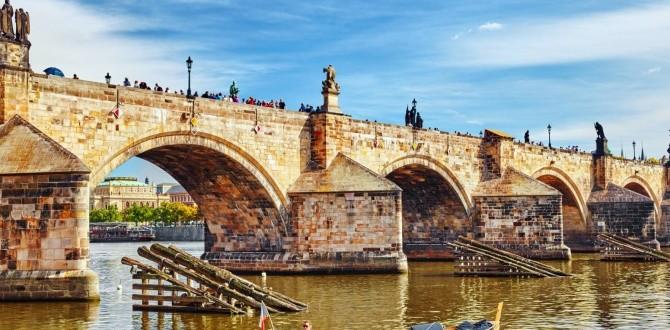Discover Belgium’s charming cities and scenic countryside with essential walkable route maps. This guide breaks down how to find and use maps for stress-free exploration, ensuring you navigate Belgium’s pedestrian-friendly paths with confidence and ease.
Belgium is a treasure trove for walkers, with its picturesque medieval towns, rolling countryside, and well-maintained paths. But navigating unfamiliar terrain can sometimes feel daunting. Worry not! Finding and using the right maps for Belgium’s walkable routes is simpler than you think.
This guide will equip you with the knowledge to explore Belgium on foot, from bustling city centers to tranquil rural landscapes, making your journey comfortable and enjoyable. Let’s dive into the best ways to find your way!
Why Belgium is a Walker’s Paradise
Belgium might be small geographically, but it packs an incredible punch when it comes to walking experiences. Think charming cobblestone streets in historic city centers, serene canal-side paths, and beautiful national parks.
The country is crisscrossed with a fantastic network of walking trails, from short city strolls to longer, multi-day treks. Many of these routes are clearly marked, making them perfect for beginners and experienced walkers alike. The variety ensures there’s something for everyone, whether you’re looking for a cultural immersion in cities like Bruges or Ghent, or seeking the peaceful beauty of the Ardennes forest.
Understanding Belgium’s Walking Trail Network
Belgium offers a diverse range of walking opportunities, managed by different entities and often signposted in specific ways. Understanding these can be key to enjoying your walk.
Knooppunten (Node Point) System: Primarily found in Flanders, this network allows you to create your own walking routes by linking numbered junction points (knooppunten). You’ll see signs with numbers, and you simply follow the signs to the next number in your chosen sequence. This system is incredibly intuitive and flexible.
GR Routes (Grote Routepaden): These are long-distance marked footpaths that traverse Belgium, often connecting with routes in neighboring countries. They are usually marked with red and white paint stripes. While excellent for multi-day hikes, sections can also be used for day walks.
Local Walking Routes: Many municipalities and tourist regions develop their own themed or circular walking routes, often with unique signage and detailed maps available locally.
Essential Tools for Navigating Belgium’s Walkable Routes
Having the right tools can make all the difference. Whether you prefer old-school maps or modern tech, here’s what you’ll need.
1. Paper Maps: The Reliable Classic
Even in the digital age, a good old-fashioned paper map is invaluable. They don’t run out of battery, are easy to share, and give you a great overview of the terrain.
Topographic Maps: For more serious hiking in rural areas like the Ardennes, detailed topographic maps are essential. They show elevation, paths, water sources, and other crucial terrain features. Look for maps from publishers like IGN (Institut Géographique National) or local Belgian publishers.
City Maps: Most tourist offices provide free, simplified maps of their city centers, highlighting pedestrian zones, points of interest, and recommended walking routes. These are usually sufficient for urban exploration.
Knooppunten Maps: Specific maps for the Knooppunten system are widely available, especially in Flanders. These maps show all the numbered junction points, allowing you to plan your route by simply picking numbers you want to connect.
Where to Buy Paper Maps:
Belgian Tourist Offices: Your first stop in many towns and cities.
Bookstores: Major bookstores will carry a selection of regional and national maps.
Outdoor Equipment Stores: Shops specializing in hiking gear often have a good map selection.
Online Retailers: Websites like Amazon or specialized map shops can ship them to you before your trip.
2. Digital Maps and Apps: The Modern Navigator
Technology offers convenience and real-time updates.
Google Maps: Excellent for urban exploration. You can download offline maps for areas you plan to visit, ensuring you have navigation even without a data signal. It’s great for finding points of interest and basic walking directions within cities.
Komoot: This app is fantastic for planning and navigating walks and bike rides. It has a vast database of routes created by users and curated by experts. You can plan your own routes or follow existing ones, and it provides turn-by-turn navigation.
AllTrails: Similar to Komoot, AllTrails offers a huge library of user-generated trails with reviews, photos, and GPS tracks. You can download maps for offline use with a premium subscription.
Outdooractive: Another popular platform for hikers, offering detailed offline maps, route planning, and a large community contributing trail data.
Governmental & Regional Websites: Many Belgian regions have official websites that offer downloadable GPX tracks or interactive maps for their designated walking routes. For example, the Wallonia tourism site often provides resources for hiking in the Ardennes.
Tips for Using Digital Maps:
Download Offline Maps: Always download maps for your intended travel area before you leave Wi-Fi.
Battery Pack: Carry a portable power bank to keep your devices charged.
Familiarize Yourself: Practice using the app or website before your trip.
3. GPS Devices: For the Dedicated Explorer
For serious hikers or those who prefer a dedicated device, a handheld GPS unit can be a worthwhile investment. They offer excellent accuracy and are built for rugged outdoor use. You can often upload GPX files from various routes onto these devices.
Finding Specific Belgium Walkable Routes
Belgium excels at making its walking trails accessible. Here’s how to find them for different types of experiences.
City Walking Routes
Exploring Belgian cities on foot is a must. The best approach is often to combine a good city map with serendipity.
Tourist Information Centers: As mentioned, these are goldmines for free city maps. They often highlight specific themed walks, such as a “Chocolate Trail” in Brussels or a “Medieval Bruges” route.
Local Websites: Many cities have dedicated tourism websites with sections on walking tours. For instance, the official tourism website for Brussels will have information on exploring its grand squares and Manneken Pis on foot.
Free Walking Tours: While not a map in itself, joining a free walking tour (often tip-based) is a superb way to get oriented and discover key sights. Guides often share their favorite walking paths.
Example City Walks:
Brussels: The Grand Place, Manneken Pis, Royal Palace, Sablon area.
Bruges: Canals, Markt Square, Belfry, Minnewater Lake.
Ghent: Gravensteen Castle, Graslei and Korenlei, St. Bavo’s Cathedral.
Antwerp: Grote Markt, Cathedral of Our Lady, historic port area, fashion district.
Countryside and Rural Routes
For those seeking nature, Belgium offers diverse landscapes.
Knooppunten System (Flanders): This is your go-to for flexible route creation in the Flemish countryside and smaller towns. You can find Knooppunten maps at local tourist offices in Flanders or sometimes online. Websites like Westtoer (for the Westhoek region) often detail how to use this system.
GR Routes: For longer hikes, consult the official GR Routes website maintained by Grote Routepaden vzw. They provide detailed information, maps, and guidebooks for various long-distance paths.
Ardennes National Park: The High Fens-Eifel Nature Park (Parc Naturel Hautes Fagnes-Eifel) offers stunning moorland and forest walks. Maps are available from park visitor centers and often online through the Wallonia tourism portal.
Provincial Parks and Forests: Each Belgian province will have its own network of marked trails. Check the official provincial tourism websites for detailed maps and route suggestions.
Planning Your Belgium Walkable Route: A Step-by-Step Approach
Whether you’re planning a short city stroll or a day hike in the countryside, a little planning goes a long way.
Step 1: Determine Your Area and Desired Experience
City vs. Countryside: Are you looking to explore urban charm or natural beauty?
Duration: Do you want a quick hour-long walk or a full-day adventure?
Difficulty: Are you looking for flat, easy paths or more challenging terrain with hills?
Interests: Are you interested in history, nature, food, or art?
Step 2: Choose Your Mapping Tool
Based on your needs, select the most appropriate tool:
For City Exploration: Google Maps (offline), free tourist maps.
For Flexible Rural Routes (Flanders): Knooppunten maps and apps like Komoot or Outdooractive.
For Long-Distance Hiking: GR walking guides and maps, GPS devices.
For Specific Nature Areas: Official park websites and maps.
Step 3: Research and Select Your Route
Online Resources: Browse tourism websites, walking apps, and specific trail information.
Guidebooks: Invest in a good guidebook for a more curated selection of routes.
Tourist Offices: Get recommendations from locals who know the area best.
Step 4: Prepare Your Maps (Physical and Digital)
Paper Maps: Purchase or print your chosen maps. Ensure they are waterproofed or kept in a waterproof case for durability.
Digital Maps: Download offline maps for your chosen app or device on your smartphone or GPS. Ensure your phone is fully charged.
Step 5: Plot Your Route (Optional but Recommended)
If using a digital tool like Komoot or Outdooractive, plan your exact route by linking waypoints.
For Knooppunten, decide which numbered junctions you want to connect.
For paper maps, mark your starting point, key junctions, and destination.
Step 6: Check the Weather Forecast
Belgian weather can be unpredictable. Always check the forecast just before you head out and pack accordingly – rain gear is often essential, even in summer.
Step 7: Pack Essentials
Beyond your chosen map and navigation tool, consider:
Comfortable walking shoes.
Water and snacks.
A portable phone charger.
A basic first-aid kit.
Appropriate clothing layers.
For longer walks, consider things like insect repellent or sunscreen. If managing personal needs, discreet and comfortable options like travel-friendly adult or child diapers can offer peace of mind and freedom to explore without worry.
Step 8: Inform Someone of Your Plans
Especially for longer or remote hikes, let a friend or family member know where you are going and when you expect to be back.
Popular Belgium Walkable Routes & Maps Overview
Here’s a quick look at some fantastic regions and the types of maps you’ll need.
| Region/City | Primary Walking Style | Map Resources | Typical Difficulty | Best For |
| :—————— | :———————— | :—————————————————– | :—————– | :—————————————- |
| Bruges | City exploration, canals | Free city maps, Google Maps, tourist info | Easy | History, romance, architecture |
| Ghent | Urban, medieval history | Free city maps, Google Maps, local walking guides | Easy | History, culture, student life |
| Brussels | Grand squares, parks | Free city maps, Google Maps, themed walking tour apps | Easy | History, culture, art, food |
| Ardennes (Wallonia) | Forests, valleys, hills | IGN maps, Ardennes tourist websites, GR routes | Moderate to Hard | Nature, hiking, adventure, tranquility |
| Flanders Fields | Historical, remembrance | Local tourist maps, GR routes, specific war memorials | Easy to Moderate | History, poignant exploration |
| Belgian Coast | Coastal paths, dunes | Knooppunten maps, coastal tourism sites, Google Maps | Easy | Relaxing walks, sea views, nature reserves |
| Kempen (Flanders) | Forests, heathlands | Knooppunten maps, regional tourism, nature park maps | Easy to Moderate | Birdwatching, nature, cycling/walking |
Navigating with Knooppunten: A Beginner’s Guide
The Knooppunten (node points) system is a brilliant way to create your own walking routes in Flanders. It’s designed for simplicity and flexibility.
How it Works:
1. Find a Knooppunten Map: These are freely available at tourist offices in Flemish towns or can sometimes be downloaded from regional tourism websites. You can also find them in shops that sell outdoor gear.
2. Identify Your Starting Point: Locate a numbered junction point on the map where you wish to begin your walk.
3. Choose Your Next Point: Look at the numbers that are connected to your starting point by a walking path line on the map. Decide which number you want to head towards next.
4. Follow the Signage: Once you start walking, you’ll see directional signs on posts. These signs will show the number of the junction you are heading towards, along with the numbers of other junction points you can reach from that immediate point.
5. Connect the Numbers: Continue this process, linking one numbered junction to the next, to gradually build your route. You can create routes of any length, from a short loop back to your start, to a long point-to-point walk.
Example: You’re at Knooppunt 15. The map shows it connects to 16, 22, and 34. You decide to head towards 22. You’ll follow the signs that point to “22 —–>”. When you reach Knooppunt 22, you’ll then look at the map or signage to decide where to go next.
Tips for Knooppunten:
Start Simple: For your first few walks, try creating shorter circular routes.
Always Carry a Map: Even with signs, having the map is crucial if a sign is missing or if you want to change your route.
Combine with Apps: Many apps like Komoot have integrated Knooppunten data, allowing you to plan and navigate digitally.
Conclusion
Exploring Belgium on foot is one of the most rewarding ways to experience its beauty, history, and culture. From the intricate cobblestone lanes of its ancient cities to the serene paths winding through the Ardennes, there’s a walkable route for every preference.
By leveraging the right maps – whether it’s a classic paper topographic map, a flexible Knooppunten guide, or a handy navigation app – you can embark on your Belgian adventure with confidence. Remember to prepare your tools, check the forecast, and pack smart. With these essential maps and a spirit of exploration
Frequently Asked Questions
Q1: Are Belgium’s city centers generally walkable?
A1: Absolutely! Belgian cities like Bruges, Ghent, and Brussels are incredibly walkable. Their historic centers often have pedestrian-only zones and charming streets perfect for exploration on foot.
Q2: What is the best way to navigate rural walking routes in Belgium?
A2: For Flanders, the Knooppunten (node point) system is excellent for creating flexible routes. For longer treks, GR routes are well-marked. For the Ardennes and Wallonia, detailed topographic maps (like IGN) or apps with offline maps are recommended.
Q3: Where can I find reliable maps for Belgium?
A3: You can find maps at Belgian tourist information centers, bookstores, outdoor equipment shops, and reputable online retailers. Many regional tourism websites also offer downloadable maps or GPX files.
Q4: Do I need to speak Dutch or French to use walking routes?
A4: Route signage is generally very visual with numbers and symbols. While some place names will be in Dutch (Flanders) or French (Wallonia), you don’t need to be fluent to navigate marked trails. A map or app will be your primary guide.
Q5: Is it easy to access public transport to reach walking route starting points?
A5: Yes, Belgium has an excellent public transport system. Trains and buses connect most towns and cities, and many walking routes start from or are easily accessible from train stations. Websites like SNCB/NMBS (Belgian Rail) are invaluable.
Q6: What are the benefits of downloading offline maps on my phone?
A6: Downloading offline maps means you can navigate without a mobile data connection, which is crucial in rural areas where signal can be spotty. It also saves you from incurring data roaming charges.
Q7: Are there any special considerations for families walking in Belgium, especially with young children or diapering needs?
A7: Belgium offers many family-friendly, shorter walks. For younger children, shorter loops are ideal. If you need to manage diapers for children or adults, packing sufficient supplies, including travel-sized wet wipes and disposal bags, is key. Many public restrooms are available in cities and at major attractions.





